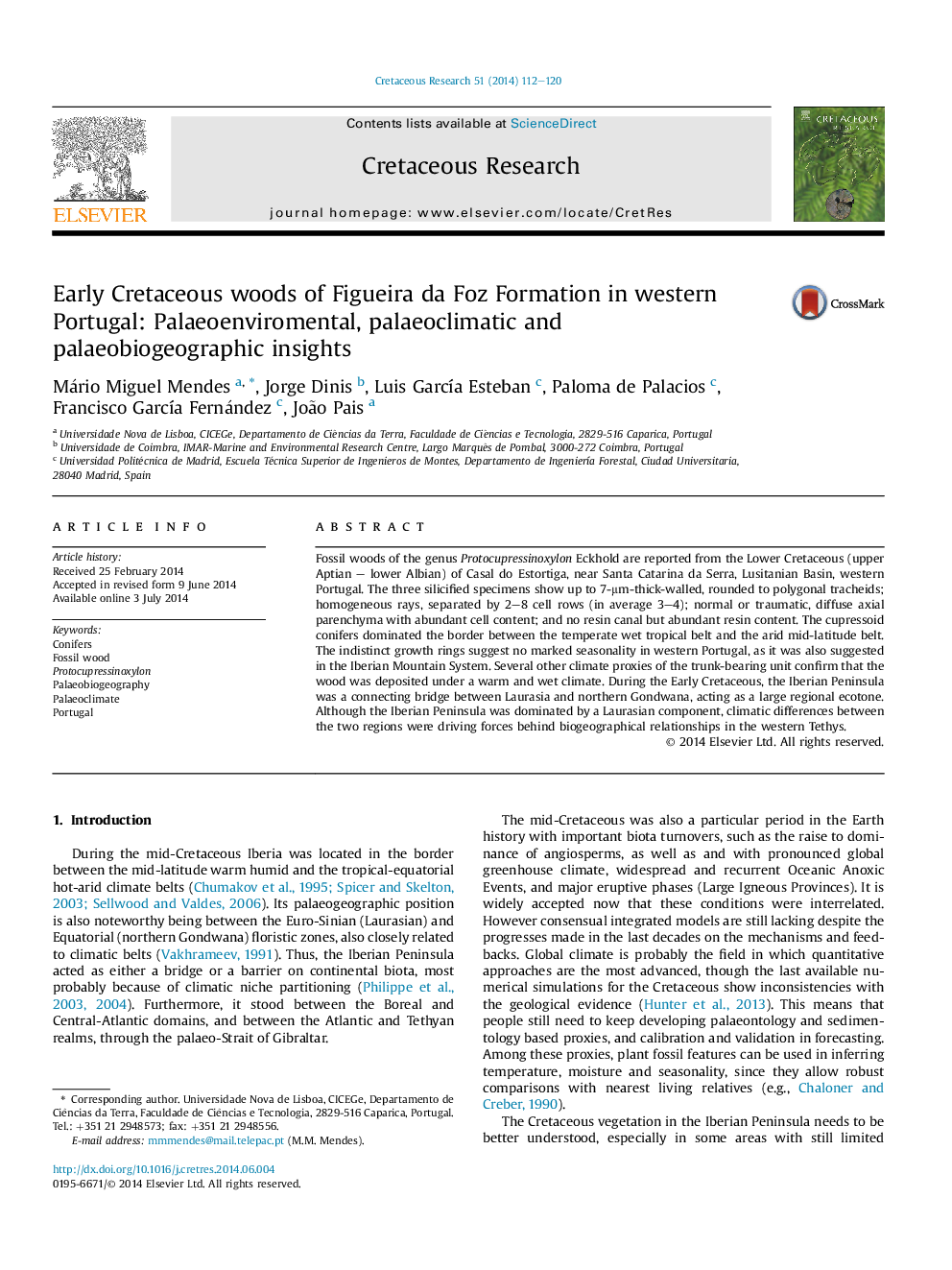| Article ID | Journal | Published Year | Pages | File Type |
|---|---|---|---|---|
| 4747036 | Cretaceous Research | 2014 | 9 Pages |
•Report the occurrence of the genus Protocupressinoxylon Eckhold in Portugal.•The new finding is out of the usual places of the Iberian.•The new fossil suggests a paleoclimate without marked seasonality.
Fossil woods of the genus Protocupressinoxylon Eckhold are reported from the Lower Cretaceous (upper Aptian – lower Albian) of Casal do Estortiga, near Santa Catarina da Serra, Lusitanian Basin, western Portugal. The three silicified specimens show up to 7-μm-thick-walled, rounded to polygonal tracheids; homogeneous rays, separated by 2–8 cell rows (in average 3–4); normal or traumatic, diffuse axial parenchyma with abundant cell content; and no resin canal but abundant resin content. The cupressoid conifers dominated the border between the temperate wet tropical belt and the arid mid-latitude belt. The indistinct growth rings suggest no marked seasonality in western Portugal, as it was also suggested in the Iberian Mountain System. Several other climate proxies of the trunk-bearing unit confirm that the wood was deposited under a warm and wet climate. During the Early Cretaceous, the Iberian Peninsula was a connecting bridge between Laurasia and northern Gondwana, acting as a large regional ecotone. Although the Iberian Peninsula was dominated by a Laurasian component, climatic differences between the two regions were driving forces behind biogeographical relationships in the western Tethys.
